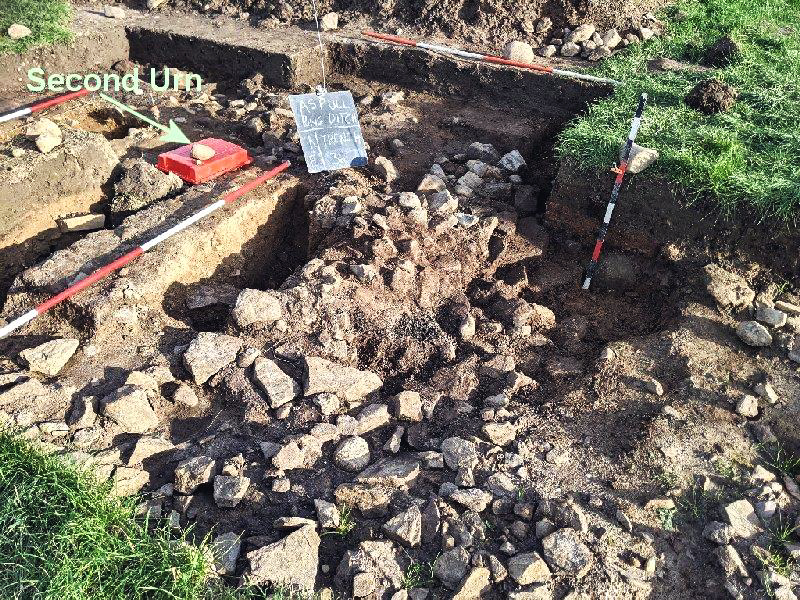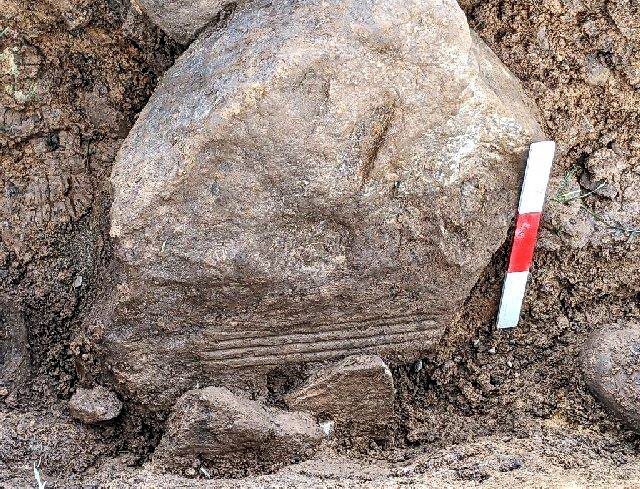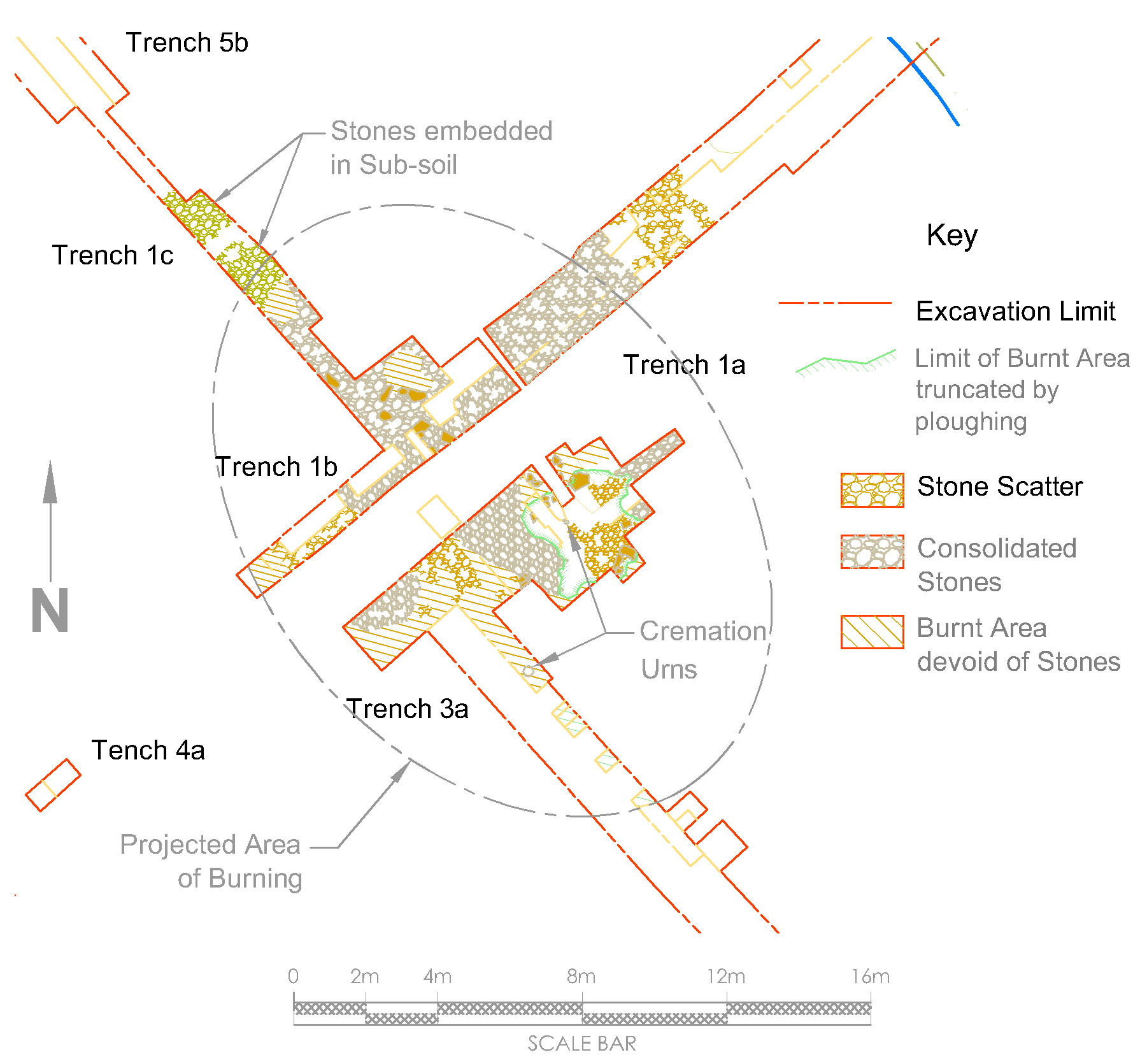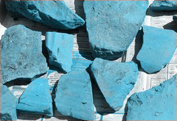
We are now coming to the end of our digging season and will soon be shutting the site down in preparation for the winter months. We have made great progress over the past year but still have much to understand about this enigmatic site. However, we now have a good idea of the extent of the stony layer and the area of burning which covers much of the central area. It is sealed by a layer of mottled sandy clay, which could well be the result of turfs creating the mound, the original height of which, we will never know.
Our latest work involved extending Trench 1c in the northeast direction until it reached Trench 5. This showed that the burnt area and stones layer reaches about halfway, but then strangely disappears below another layer of stones, which appear to be embedded in the subsoil, lying just under the plough soil.
In Trench 3a, recent work has given us a much greater understanding of the sandy clay mound which contains our second cremation urn. Clearing the stony layer on the southwest side of it has revealed a clear rise towards the urn's location. We have git a similar pattern on the northwest side, although the rise here is only evident in the level of the burning layer. The edge of this layer can be traced running all around the patch of sandy clay. All of this suggests this was originally a sandy clay mound, truncated over the years by ploughing. Unlike other patches of sandy clay, we know this mound is manmade as it has our cremation urn embedded in it. This therefore could well be the focus of the whole site in the Bronze Age, something for us to look forward to in our investigations next year.

Already though, large angular stones have begun to appear in the sections we've already cut into it. One particular stone has peculiar mark cut into it. These are in the form of parallel grooves (a much smaller stone had already been spotted in the stony layer). This is not the usual random spirals or cup marks you get in the Neolithic but quite straight and evenly cut lines. As far as we can tell, this is totally unprecedented for this period.
What more mysteries will this fascinating site hold for us? As usual you can follow the progress on our Dig Diary.

CBA NW Conference
This year's Autumn Conference will be held on 18th November at the British Commercial Vehicle Museum in King Street, Leyland. Talks will present archaeological work that has taken place in the region in the past year (including recent work on Bourne Hill, where we helped the Wyre Group a few years ago with their investigations). Tickets will cost £12 for members and £15 for non-members and will be available via Eventbrite or may be purchased at the door.
Christmas Meal and Quiz Night
As usual next month will be our party night held once again at the Royal Oak at the bottom of Standishgate. Also, as usual the day has had to be changed to the first Tuesday i.e. 5th December. Nearer the date I'll be sending the menu out but, in the meantime, could you please let me know if you are interested in going.
Next Meeting
Wednesday 1st November - at the Real Crafty on Upper Dicconson Street starting at 7.30pm as usual. This month we are having Kevin Horsley, rearranged from September. Kevin was previously with archaeological contractors Wardell Armstrong. Whilst with them he worked on excavations of the Old Racecourse ground in Newton-le-Willows where horse racing took place for many years, before being transferred to the present site at Haydock. Racing probably started at Newton Common in the 17th century but the main activity occurred there from the mid 18th century to the early 20th century. The site was described in the 19th century as "a most picturesque spot in natural aspect, rural and exceedingly pretty". The excavations were able to reveal aspects of the ground including part of the grandstand. Kevin will also be telling us about more recent projects he's been involved |



